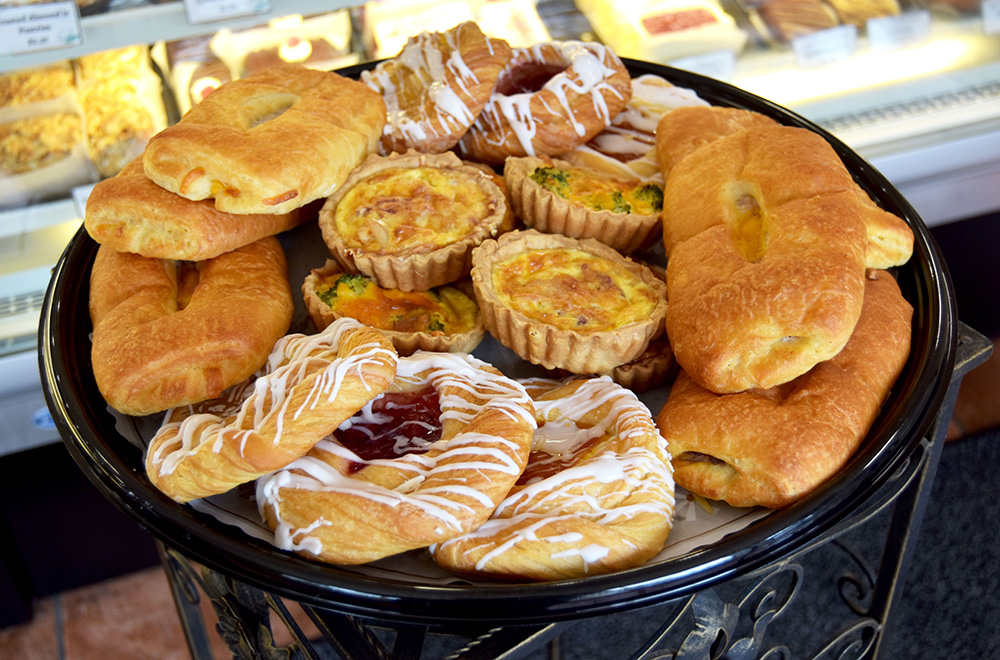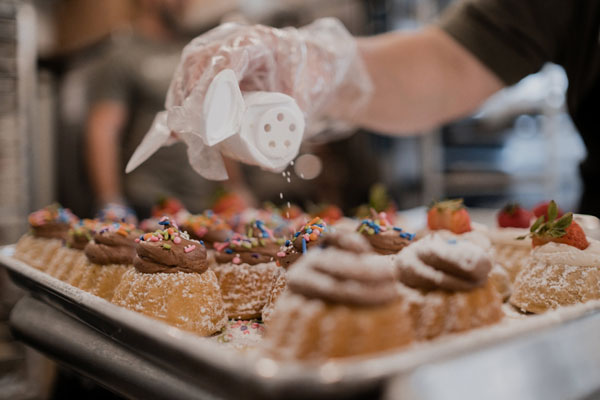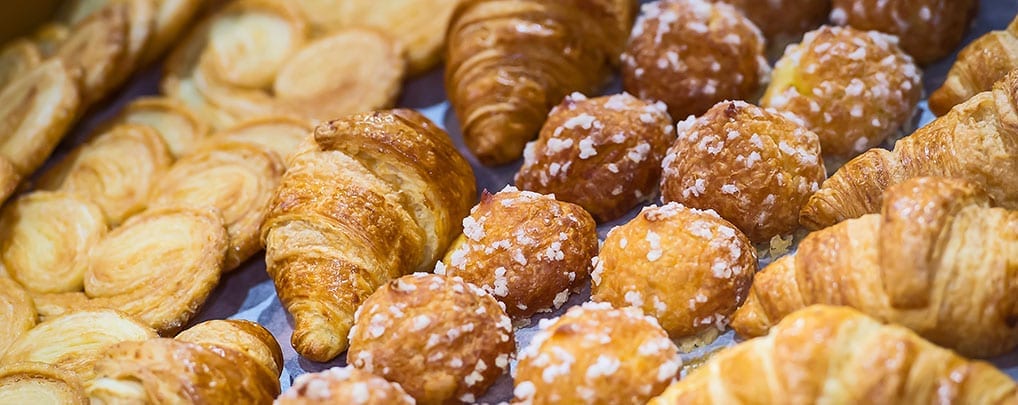Classy Birthday Catering Maddington for an Innovative Touch
Classy Birthday Catering Maddington for an Innovative Touch
Blog Article
Understanding the Art of Bakery Products: From Newly Baked Breads to Alluring Pastries and Finger Foods
The detailed art of bakery products includes a range of strategies and ingredients that transform basic elements into culinary thrills. From the scientific research behind the ideal loaf of bread, where fermentation and gluten growth play pivotal functions, to the skill needed for developing split breads, each facet discloses an engaging story of workmanship. The convenience of finger foods highlights just how taste and appearance can be skillfully integrated to engage diverse taste choices. As we discover these components, one might ask yourself: what underlying concepts regulate the success of these beloved creations?
The Science of Bread Making
At the heart of every loaf of bread exists an interesting interplay of chemistry and biology. The procedure of bread making begins with the mix of flour, water, yeast, and salt-- each active ingredient playing an important role in the end product. Flour includes healthy proteins, mainly glutenin and gliadin, which, when blended with water, form gluten (Catering Maddington). This elastic network is crucial for trapping gases generated during fermentation.
Yeast, a living microorganism, ferments the sugars existing in the flour, generating co2 and alcohol while doing so. The carbon dioxide gas produces bubbles in the dough, creating it to climb and develop a light structure. The temperature level and moisture throughout fermentation considerably influence yeast activity and, subsequently, the bread's taste and texture.

Learning Pastry Methods
How can one accomplish the delicate balance of appearance and flavor that specifies extraordinary bread? Mastering bread techniques needs a deep understanding of active ingredients, techniques, and the scientific research behind them. Fundamental to this craft is the choice of high-quality components-- flour, butter, sugar, and eggs-- each playing a crucial function in the end product's flavor and structure.
The strategy of lamination, which involves folding layers of dough and butter, produces the wanted flakiness in pastries like croissants and puff bread. Accuracy in temperature level is important, as butter must continue to be cold to make sure optimum layers. Similarly, proper mixing approaches, such as the creaming strategy for cakes, ensure even consolidation of air and fat, causing a light and ventilated crumb.
Moreover, preserving the ideal moisture degrees throughout cooking can dramatically influence the end result, ensuring that pastries rise correctly and achieve that golden-brown finish. Lastly, the art of pastry also demands patience and practice; each attempt improves one's skill and understanding of the intricate balance called for to develop tempting breads that thrill the detects. Mastery in these methods eventually distinguishes an experienced pastry chef from an amateur.
Sorts Of Finger Foods
The globe of cooking delights extends past breads to include a broad array of finger foods, which are commemorated for their comfort and adaptability. These bite-sized treats are excellent for social celebrations, using a range of flavors and appearances that deal with diverse tastes.

On the sweeter side, miniature tarts and bite-sized cupcakes offer a delightful surface to any type of dish, attracting those with a craving for sweets. Cheese and charcuterie boards offer as a sophisticated choice, permitting visitors to tailor their bites with a selection of meats, cheeses, fruits, and nuts.
Flavor Profiles in Cooking
Baking is an elaborate dance of taste profiles that combines pleasant, full-flavored, and umami notes to produce a harmonious experience for the taste buds. Understanding these profiles is crucial for bakers looking for to elevate their developments.
Sweetness often works as the structure in baked items, with sugars, fruits, and all-natural sweeteners boosting flavor depth. Active ingredients such as chocolate and caramel present complex sweet notes that can either dominate or match other flavors. Conversely, mouthwatering elements, commonly discovered in breads and breads, offer balance and contrast. Components like cheeses, herbs, and flavors can change an easy dough right into a complex flavor experience.
Umami, frequently forgotten in baking, plays a substantial duty in enhancing tastes. Ingredients such as aged cheeses, fermented products, or also certain nuts contribute to a mouthwatering deepness that enhances general preference.
Additionally, the interplay of acidity from active ingredients like buttermilk or citrus zest can brighten flavors, using a revitalizing counterpoint to sweetness. By thoughtfully integrating these taste accounts, bakers can craft items that reverberate with diverse palates, producing a remarkable cooking experience. Ultimately, mastering flavor profiles is crucial to technology on the planet of baking.
Important Baking Equipments and Components
Recognizing taste accounts in cooking collections the phase for picking the right devices and active ingredients that promote the production of exceptional baked goods. The foundation of successful cooking hinge on having essential devices available. Trick things consist of mixing bowls, measuring mugs, and spoons for accuracy, along with a tough stand mixer or hand mixer for easy mixing. A trustworthy collection of baking pans-- such as sheet frying pans, loaf frying pans, and cake Full Report frying pans-- is important for accomplishing desired appearances and forms.
Flour offers as the backbone of a lot of recipes; selecting the right type-- be it bread, bread, or all-purpose flour-- can dramatically impact the navigate to these guys result. Baking powder and baking soft drink are important for creating lift in cakes and pastries.
In addition, including flavor boosters like vanilla extract, flavors, and citrus enthusiasm can elevate your developments. By making certain access to these essential devices and active ingredients, bakers can confidently begin on their cooking trip, crafting a diverse range of wonderful baked items.
Conclusion
Proficiency in bread production, pastry preparation, and finger food discussion discloses the complex connections between active ingredients and procedures. Birthday Catering Maddington. Checking out diverse taste profiles enhances the baking experience, while important devices and components offer the structure for success.
Exactly how can one achieve the fragile balance of texture and taste that defines outstanding pastry? Fundamental to this craft is the choice of premium ingredients-- flour, butter, sugar, and eggs-- each playing a crucial function in the final item's flavor and structure.

Comprehending taste accounts in baking collections the phase for picking the right their explanation devices and active ingredients that help with the creation of outstanding baked products. Checking out varied flavor accounts improves the baking experience, while essential tools and active ingredients offer the foundation for success.
Report this page